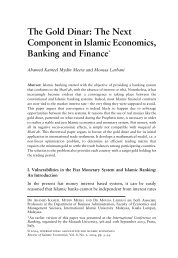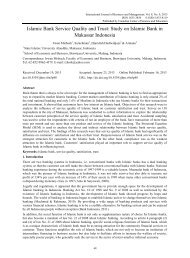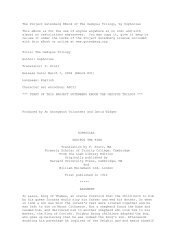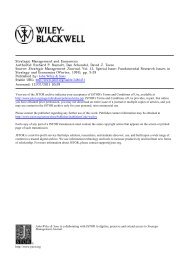The Oil Industry in Nazi Germany, 1936-1945
The Oil Industry in Nazi Germany, 1936-1945
The Oil Industry in Nazi Germany, 1936-1945
Create successful ePaper yourself
Turn your PDF publications into a flip-book with our unique Google optimized e-Paper software.
264 BUSINESS HISTORY REVIEW<br />
three of the crude oil <strong>in</strong>dustry organizations were under the control of<br />
government officials or synthetic oil <strong>in</strong>dustry personnel.30<br />
To sum up, the crude oil <strong>in</strong>dustry <strong>in</strong> <strong>Nazi</strong> <strong>Germany</strong> was permitted<br />
to share <strong>in</strong> the f<strong>in</strong>ancial bonanza brought on by the regime. It received<br />
government subsidies for exploration, was encouraged to produce by<br />
high tariffs on imported goods, and was allowed to profit by expand<strong>in</strong>g<br />
<strong>in</strong>to occupied territories (especially Austria). For the most part, these<br />
<strong>in</strong>centives rewarded the <strong>in</strong>dustry's technical and production success.<br />
<strong>The</strong> <strong>in</strong>dustry nonetheless rema<strong>in</strong>ed secondary <strong>in</strong> the m<strong>in</strong>ds of <strong>Nazi</strong><br />
planners, and received less f<strong>in</strong>ancial and political support than did its<br />
synthetic counterpart. Regulation and ultimate control of the <strong>in</strong>dus-<br />
try's expansion rema<strong>in</strong>ed <strong>in</strong> the hands of the government, primarily<br />
because of physical limitations on the <strong>in</strong>dustry's expansion, its <strong>in</strong>ability<br />
to provide airplane fuel and lubricants, and the fact that it lacked po-<br />
litical power.<br />
THE SYNTHETIC PETROLEUM INDUSTRY IN GERMANY<br />
If the expansion of the German crude oil <strong>in</strong>dustry was impressive,<br />
the growth of synthetic petroleum was awesome. Leuna, the first syn-<br />
thetic oil plant, opened <strong>in</strong> 1927, produc<strong>in</strong>g annually about 90,000 met-<br />
ric tons. Just twelve years later, at the outbreak of the war, annual<br />
synthetic capacity was about 1.5 million metric tons. By 1944, the an-<br />
nual rate of production (based on the first four months of the year) was<br />
almost 4.3 million tons, while total annual synthetic capacity stood at<br />
close to 5 million tons.3' Just as the German oil <strong>in</strong>dustry as a whole<br />
expanded more rapidly than other <strong>in</strong>dustries dur<strong>in</strong>g the <strong>Nazi</strong> period,<br />
so its synthetic sector expanded more rapidly than its crude sector.<br />
Expansion <strong>in</strong> the synthetic oil sector was not uniform. One of the<br />
two major synthetic processes was allowed to develop much faster and<br />
to a much greater extent than the other. This discrepancy cannot be<br />
attributed to physical limitations on the expansion of the facilities for<br />
production of either process. Nor, it seems, can the preference of one<br />
process over the other be expla<strong>in</strong>ed on purely economic grounds.<br />
While economic structures have undoubtedly changed s<strong>in</strong>ce World<br />
30 Quoted <strong>in</strong> British Intelligence Objectives Subcommittee, BIOS F<strong>in</strong>al Report 513, "Notes on the<br />
Organization of the German Petroleum <strong>Industry</strong> dur<strong>in</strong>g the War," by W. H. Thomas and J. G. Withers<br />
(1-31 Oct. <strong>1945</strong>), 1-15, (Army Staff) Intelligence (G-2) Library "P-file," 1946-51, RG 319, WNRC; Office<br />
of Strategic Services, Research and Analysis Branch, R&A Report 1917, "Draft of Section for German<br />
CAD Guide on <strong>Oil</strong>" (18 May 1944), 2-3, Records of the Office of Strategic Services RG 59, NA. See also<br />
organizational chart <strong>in</strong> USSBS envelope 110.d. 108, "Government Control Instruments of the German<br />
<strong>Oil</strong>, Chemical, and Rubber Industries," Records of the U.S. Strategic Bomb<strong>in</strong>g Survey (European War),<br />
RG 243, NA.<br />
31 Hughes, "Technological Momentum," 120; USSBS 113, German <strong>Oil</strong> <strong>Industry</strong>, sec. 1.08, Table 15,<br />
31, and sec. 2.04, 43-44.












